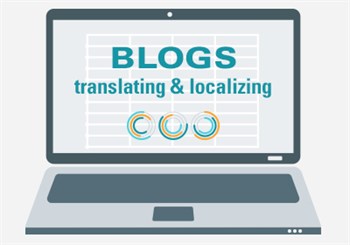Translating Inbound Marketing Content: Blogs
Inbound marketing is an effective strategy used to attract customers by providing information relevant to their needs, rather than reaching out through traditional outbound marketing. The great content you create is one of the most effective ways to attract customers. By translating and localizing your content, like blogs, you will gradually manage not only to generate more leads across all of your markets, but you will also build a relationship with your customers by showing that you value each of your target audiences.
Tips for Translating & Localizing Blogs

Writing relevant, informative content in the form of easy to read blog posts is an effective way to attract more qualified website traffic. But in order to reach your targeted personas, it’s crucial to create blogs that your audience can read in their language.
Localizing, translating and optimizing your blog posts so search engines can find your content and deliver it to your target audiences is necessary to gain traffic. In this blog, I will detail some tips for localizing and translating blog posts.
Capture Attention with the Title
Great consideration is given to writing an engaging title. It is often the title of your blog that captures the attention and defines the success or failure of your blog. Make sure the translation or transcreation keeps the message that is conveyed in the source language and doesn’t change the meaning since it will make or break your blog
Well-Structured Content
Make sure the blog’s translation is easy for your readers to read, understand and digest. To do this, use short and concise subtitles, a clear introduction and conclusion, and keep the same structure of the source content.
Always Localize your Blogs
The British and the Americans have their own vocabulary, their own expressions, and their own slang so one English blog that isn’t localized won’t necessarily make sense for both audiences. This applies to other languages such as Spanish, French or German. And this is highly seen when there are cultural differences that go beyond language, such as holidays, pop culture and other customs. In order to be culturally correct and appropriate for all languages and all locales you are targeting, localizing your blogs is highly recommended.
Localize each piece of the blog content from the images to the Meta data. Search engines will favor localized blogs that have the technical information translated as well. See: SEO Best Practices for Blog Posts for further information.
Identify which keywords or phrases are being targeted and make sure they are localized for the source language and audience. If your blog includes CTAs, also localize those with appropriate phrases, colors and styles.
Summary
Writing blogs is a key approach for inbound marketing strategies that will increase your traffic, boost your SEO and enhance your brand’s reputation as an industry thought leader. Taking the time and resources to translate and localize your blogs will help you attract global audiences and build trust with your customers around the world.
